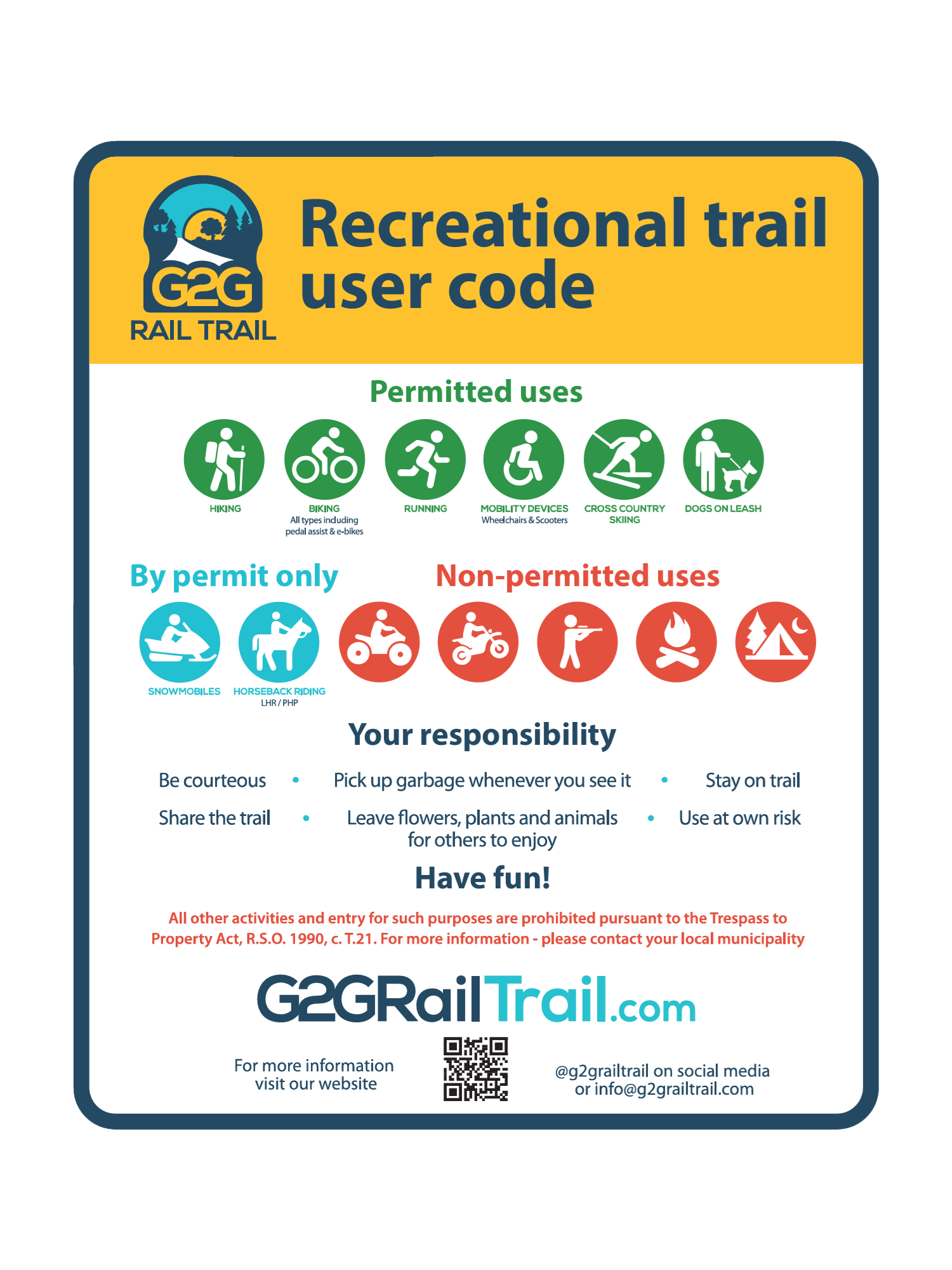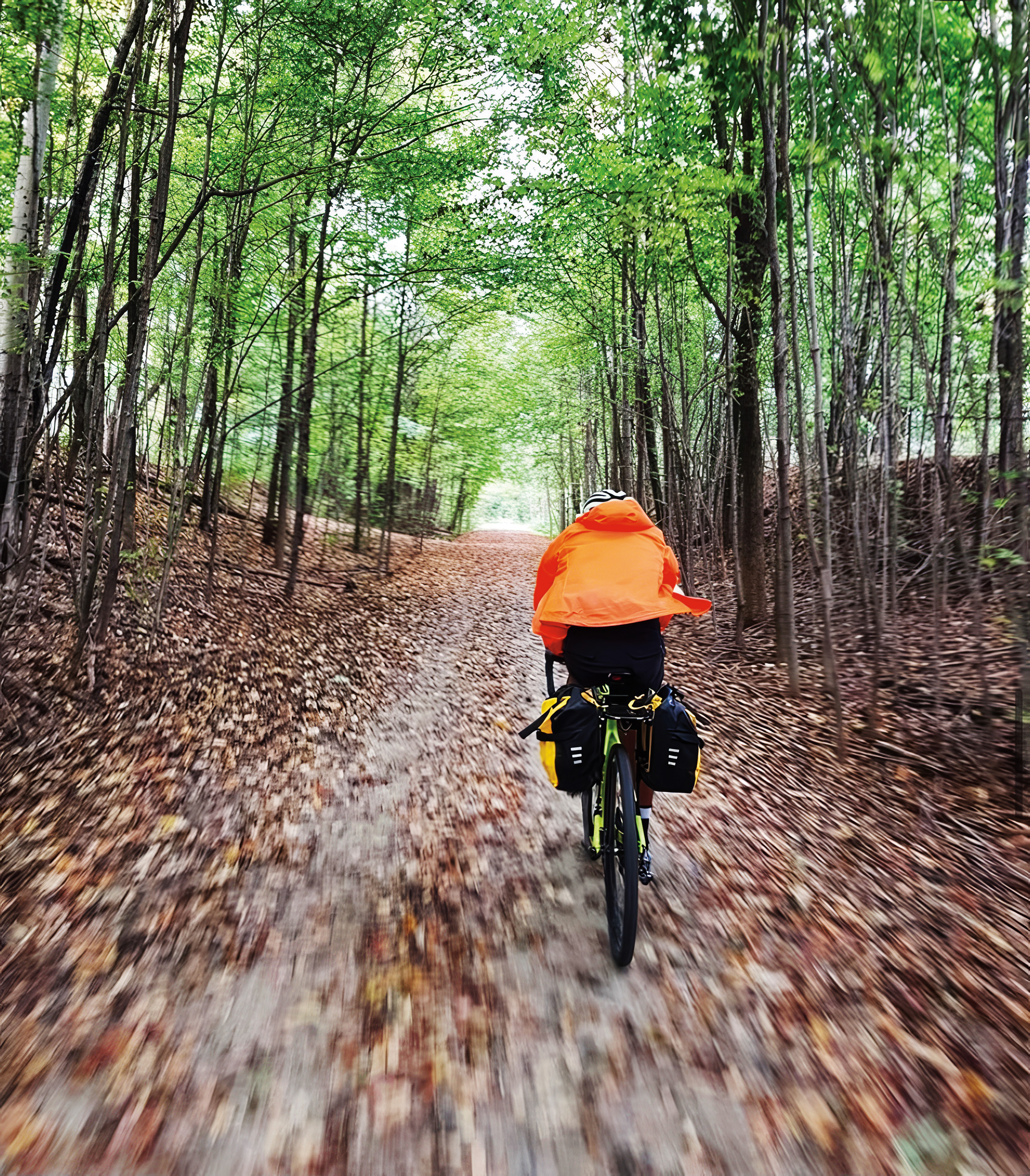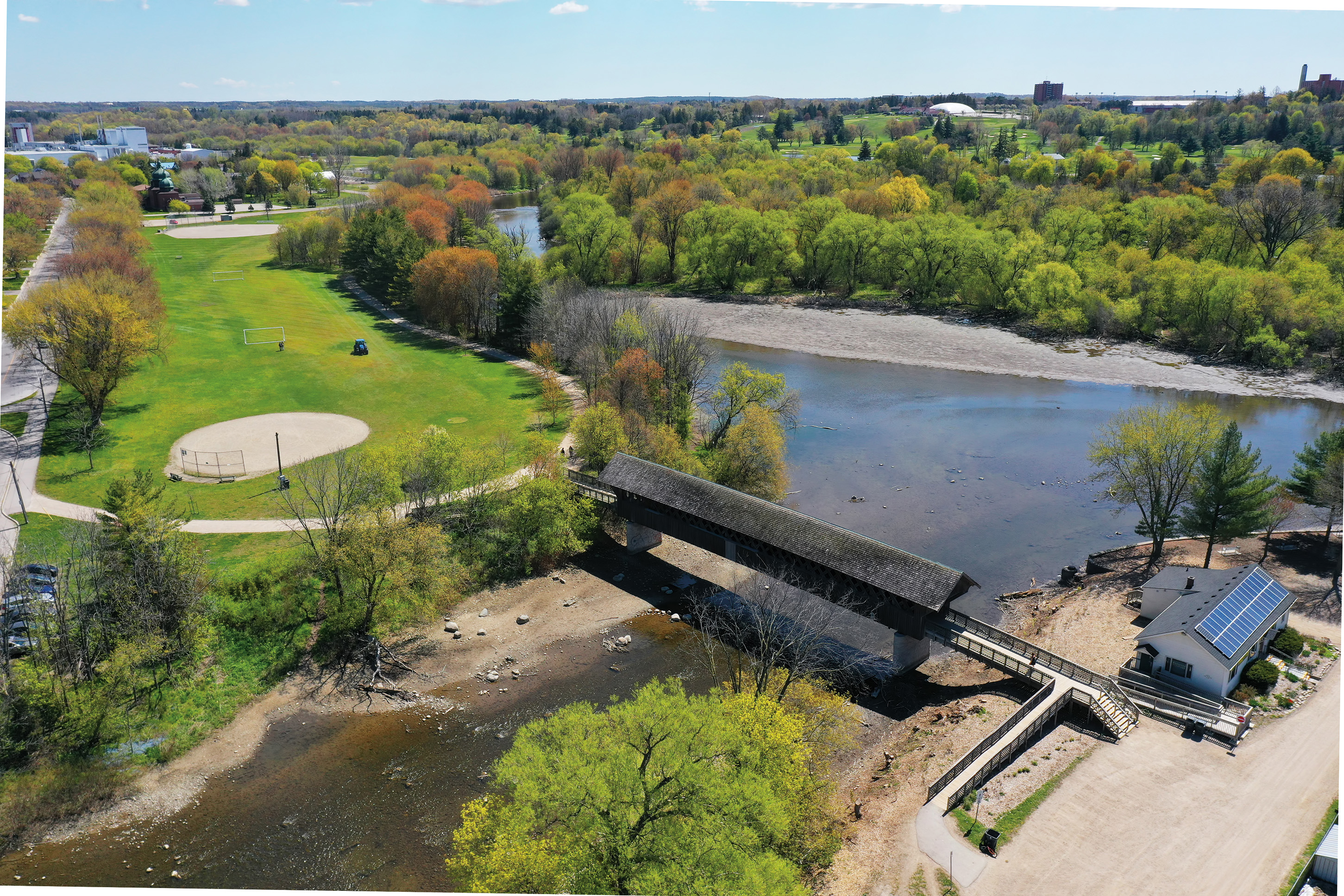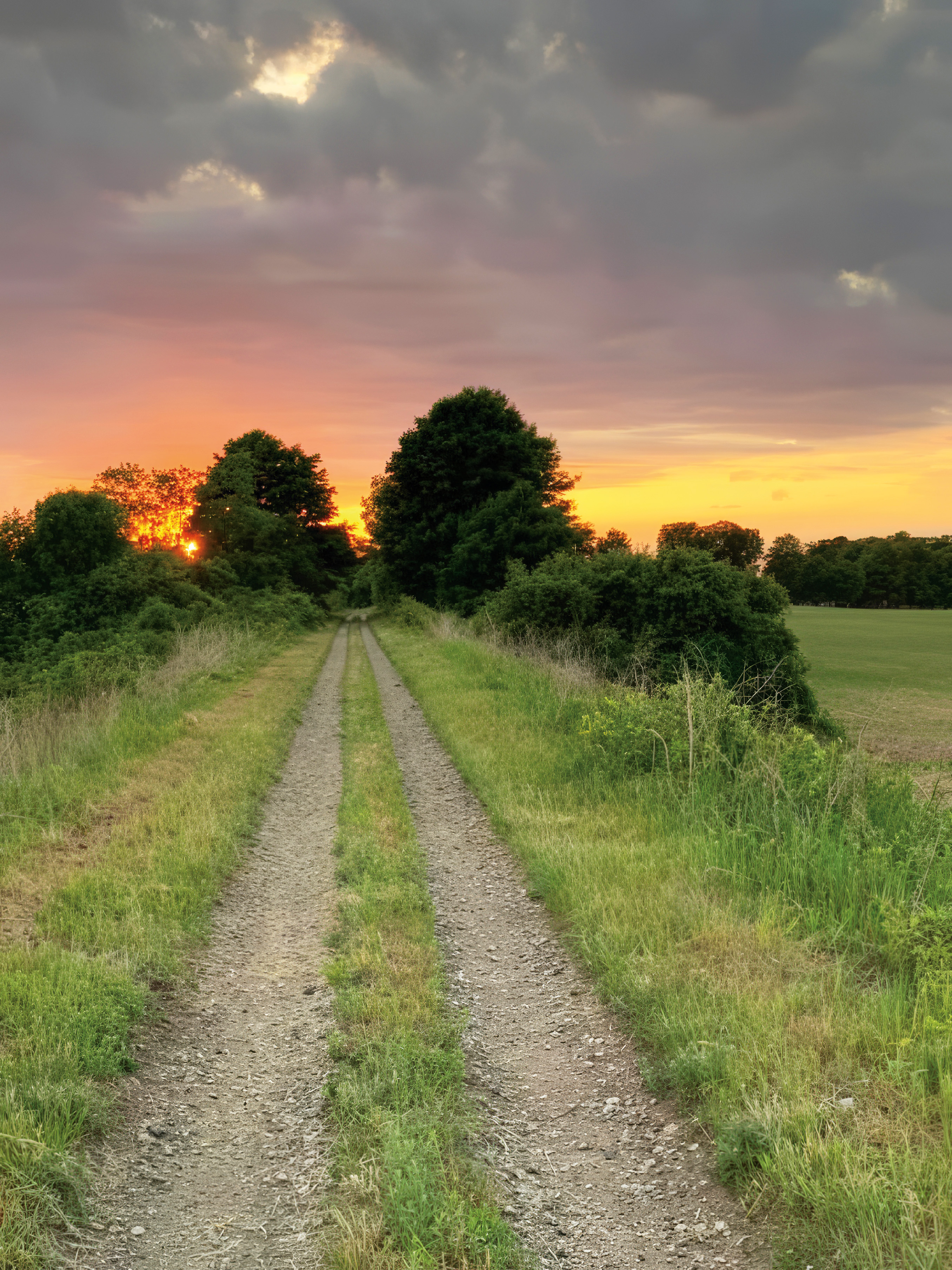Goderich to Guelph Rail Trail Experience

User Code
Permitted uses are:
Hiking, Biking, Running, Mobility devices, Cross Country Skiing, and Dogs on leash.
Non-permitted uses are:
Motorized Vehicles, Hunting, Campfires, and Camping.
Responsibilities are:
be courteous, pick up garbage, stay on marked trail, share the trail, leave flowers and plants and use at own risk
By permit only:
Snowmobiles and Horseback Riding

Help create a brighter future for the G2G Rail Trail!
The G2G Rail Trail charity is on a mission to revitalize an old railway corridor into a world-class recreational trailway.
With your support, we can promote eco-friendly transport, boost tourism, and enrich lives.
Visit www.g2grailtrail.com or email donate@g2grailtrail.com to learn more.
Goderich to Guelph Rail Trail History
The G2G Rail Trail Experience is a 132-kilometer trail that links the City of Guelph and the Town of Goderich.
The G2G Rail Trail traces the regional history of rail transport from the late 1800s to present day. The trail follows the Guelph Junction Railway (GJR), which is still running, before linking up to the Canadian Pacific Railway (CPR) Goderich Line, which was decommissioned in 1988.
GJR was established in 1886 by the federal government to foster economic growth in Guelph and surrounding communities. The railway was transferred to municipal ownership in 1908 and still contributes to the city’s economy and trail network.
The CPR Huron Line was established in 1907 to link the bustling markets of Guelph to Goderich on the shore of Lake Huron. The Goderich Rail Line was constructed after the City of Guelph pressured the Canadian Pacific Railway to build a rail extension to a port town to support economic development. The construction of the Huron Rail Line drove construction of the Goderich Port, which included dredging the lakefront to accommodate large ships. The rail line bustled until 1980s, when a shorter, flatter track to Goderich was developed from Stratford, and changes to the economy reduced the number of trains between Guelph and Goderich. In 1988, the Goderich-to-Guelph CPR rail line was decommissioned; the tracks and most bridges were removed in 1990.
To preserve valuable infrastructure, the province of Ontario acquired the rail corridor in 1992. The land was unused until 1998, when the County of Wellington and Regional Municipality of Waterloo leased the land to develop the Kissing Bridge Trailway. This would go on to inspire development of the G2G Rail Trail.
Today the G2G Rail Trail sees more than 300,000 individual users per year. The trail is an excellent way to see a variety of urban and rural landscapes as it passes through 13 towns and cities. It is a beautiful journey through all seasons and can be explored as one long adventure or segment by segment.
Happy travels!


Lorem ipsum dolor sit amet, consectetur adipiscing elit. Suspendisse varius enim in eros elementum tristique. Duis cursus, mi quis viverra ornare, eros dolor interdum nulla, ut commodo diam libero vitae erat. Aenean faucibus nibh et justo cursus id rutrum lorem imperdiet. Nunc ut sem vitae risus tristique posuere.


A forested segment of the G2G Rail Trail.
The covered bridge in Guelph was built by volunteer labour in 1992.
Goderich lighthouse is the oldest light station on Lake Huron.
Sunset on the G2G Trail is enjoyed by all.
